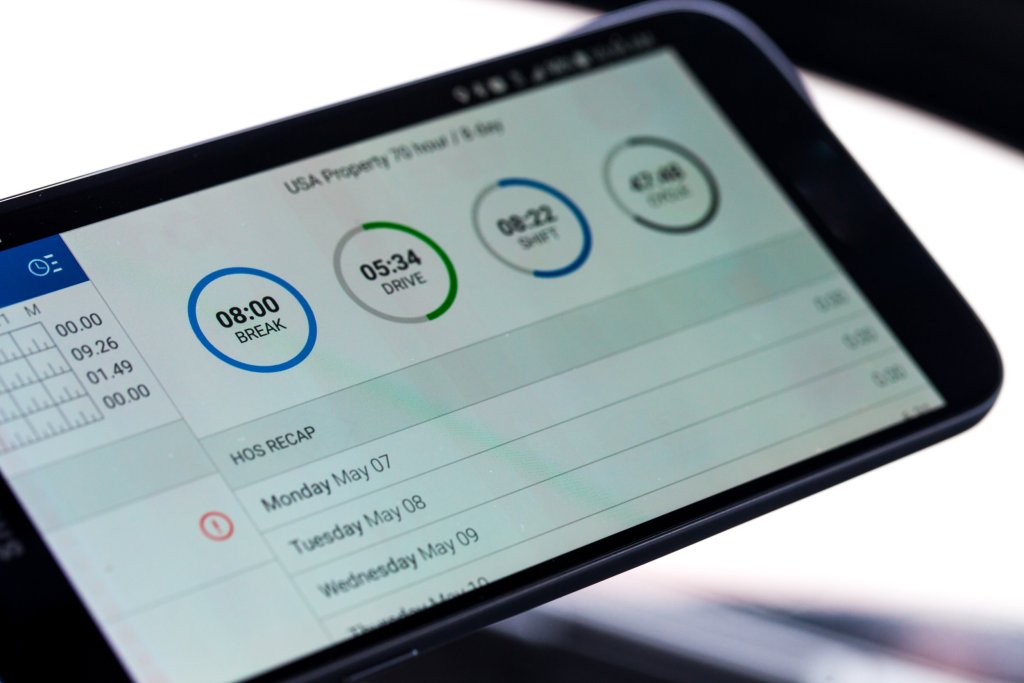
The Electronic Logging Device (ELD) Mandate was published by the FMCSA as a way to ensure commercial truck drivers adhere to their hours of service regulations. This mandate requires all commercial drivers and trucking companies to use an electronic logging device for tracking driving time and other information related to their work. The ELD mandate helps improve safety on the roads, reduce paperwork, and streamline compliance with hours-of-service rules.
In this article, we will discuss what the ELD mandate is, who it affects, why it was created, common questions such as “Can I drive a truck without an ELD?” and helpful tips for complying with the mandate.
Why Was the ELD Mandate Created
The ELD Mandate was created to help maintain compliance with the hours-of-service (HOS) regulations established by the Federal Motor Carrier Safety Administration (FMCSA). The mandate requires commercial motor vehicle drivers and carriers to use ELDs in their vehicles that automatically record driving time. This replaces paper driver logs, which were prone to errors and falsification.
The ELD Mandate is specifically designed to improve safety on the roads by ensuring that commercial motor vehicle drivers are not driving for more hours than permitted under the HOS regulations. It also helps to ensure that these drivers have proper rest periods between shifts, as well as take their required breaks.
What Does an ELD Do?
An ELD is an electronic device connected to a vehicle’s engine that records and monitors how long a driver has been driving, as well as location data such as how far they’ve driven. The device is designed to help reduce driver fatigue and increase safety on the roads by making sure that drivers are not driving for too long without taking a break.
ELDs can track drivers’ HOS data in real time and will alert them when they have exceeded their time limits. This data is then sent to a secure server where it can be accessed by both the driver and their employer, ensuring that drivers are following regulations and not driving while fatigued.
By using an ELD, drivers and their employers can avoid fines for non-compliance with HOS regulations. Additionally, the data collected by ELDs can also be used to improve driver safety, fleet management, and efficiency.
Consequences for Non-Compliance With the ELD Mandate
Failure to comply with the ELD Mandate can result in serious consequences for drivers and companies alike.
Anyone who is caught operating a commercial motor vehicle without an ELD installed may be subject to roadside inspections, civil penalties, or even criminal charges. Additionally, any driver found operating without electronic logging devices installed is subject to out-of-service orders. According to federal regulations, drivers who fail to comply may also be liable for recordkeeping violations, including “maximum civil penalty of $1,496 for each day the violation continues, up to $14,960.”
Do I need an ELD?
It’s important that drivers and motor carriers alike understand the importance of compliance with the Electronic Logging Device Mandate. If you’re curious about whether you need an ELD or not, the answer is yes for most commercial motor vehicles in the United States. Failing to comply with this law can have serious consequences and should be taken seriously.
If you have any questions about the Electronic Logging Devices or need assistance regarding the installation of an ELD, contact your fleet manager for guidance. By following the ELD Mandate, you can help keep our roads safe and ensure that all drivers of commercial vehicles are operating within the bounds of HOS regulations.
Maintaining Records of Duty Status with ELD
Maintaining Records of Duty Status with Electronic Logging Devices is an important safety measure for truckers and other commercial drivers in the United States. Under the ELD Mandate, drivers must use an ELD to log their Hours of Service.
An ELD is used in place of a paper log book and helps ensure that truckers are following the rules regarding driving time and rest periods. ELD devices are monitored and tracked by the FMCSA to help ensure compliance with the Hours of Service regulations.
When using an ELD device, drivers must record their duty status as either On Duty or Off Duty. The device records all activities that affect a driver’s HOS, including driving time, on-duty time, off-duty time, and sleeping time. Drivers are required to keep a record of all log entries made by their ELD in the form of a driver’s daily log.
Drivers can review and edit their rules-based log when necessary, as well as use the ELD to generate a driver’s HOS summary report.
Is an EDL Different From an Automatic Onboard Recording Device?
An ELD is a type of technology used to record a driver’s compliance with laws and regulations related to commercial motor vehicle operations. As such, it is different from automatic onboard recording devices (AOBRD), which is the predecessor to the ELD.
An AOBRD records data such as vehicle speed and engine hours, similar to an ELD. However, the AOBRD does not meet all of the requirements set forth in the ELD mandate. For example, an AOBRD does not require a driver to digitally sign their daily logbook or provide information on unexpected changes in the driver’s duty status.
Integration With Other Systems
Additionally, while both technologies are intended to reduce the paperwork burden on drivers, an AOBRD is less advanced than an ELD in terms of integrations with other systems. An ELD can be integrated into a fleet management system, allowing for more efficient data exchange between fleet managers, the driver, and their employer.
In summary, while both types of technology are used to record a driver’s compliance with laws and regulations, an ELD is more advanced than an AOBRD in terms of meeting the requirements of the ELD mandate as well as integrations with other systems.
How to Choose an ELD

As a truck driver, choosing the right ELD is crucial to staying compliant with the law and ensuring you have accurate records of your driving time.
You can check out a list of EDL devices on the FMSCA website. Here are some key factors to consider when choosing an ELD:
1. Compliance
First and foremost, you need to ensure that the ELD you choose is compliant with the FMCSA regulations. Look for an ELD that has been certified by the FMCSA and meets all the technical requirements outlined in the mandate.
2. Ease of Use
Your ELD should be user-friendly and easy to operate, so you don’t waste time trying to figure out how to use it. Look for an ELD with a simple, intuitive interface that allows you to quickly record your driving time, breaks, and other required information.
3. Reliability
You need an ELD that you can rely on, one that won’t fail you when you need it the most. Consider the durability of the device, how often it needs to be charged, and any potential technical issues that could arise.
4. Cost
There are many ELDs on the market, with varying costs. While cost should not be the only factor you consider, it is an important one. Look for an ELD that fits within your budget, but also provides the features and functionality you need to stay compliant and manage your driving time effectively.
Overall, choosing the right ELD is a critical decision. By considering regulatory compliance, ease of use, reliability, and cost, you can select an ELD that meets your needs and helps you stay compliant with the ELD mandate.
Following the ELD Rule as a Truck Driver

In conclusion, electronic logging devices (ELDs) are a powerful tool for truck drivers and their employers to help ensure compliance with Hours of Service regulations. By tracking how long a driver has been driving, as well as how far they’ve driven, ELDs can alert them when they have exceeded their time limits and provide useful data on fleet management and fleet efficiency. Additionally, an ELD is more advanced than paper logs or an AOBRD in terms of meeting the requirements of the ELD mandate as well as integrations with other systems.
Ultimately, using an ELD helps keep everyone safer on the roads by reducing driver fatigue while providing valuable insights into fleet operations. Consider checking out one of our recent blogs to learn about planning for your next trip as a truck driver!
